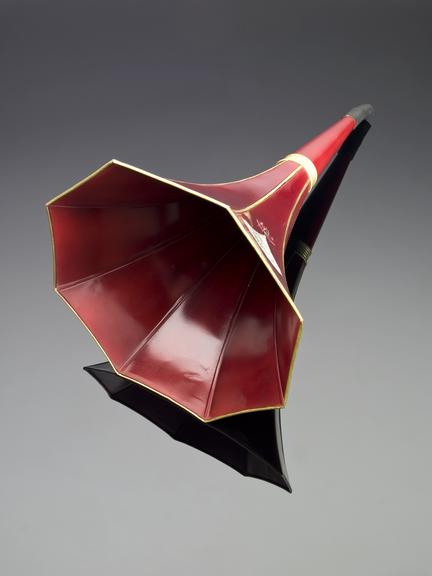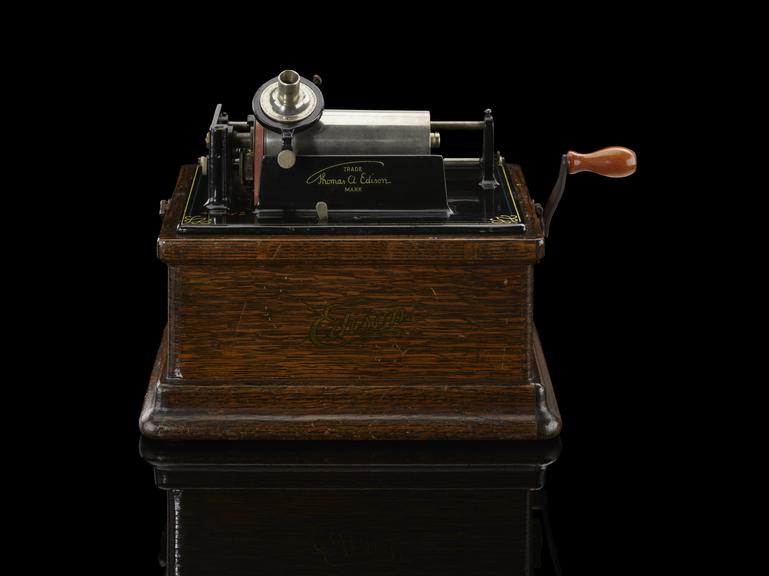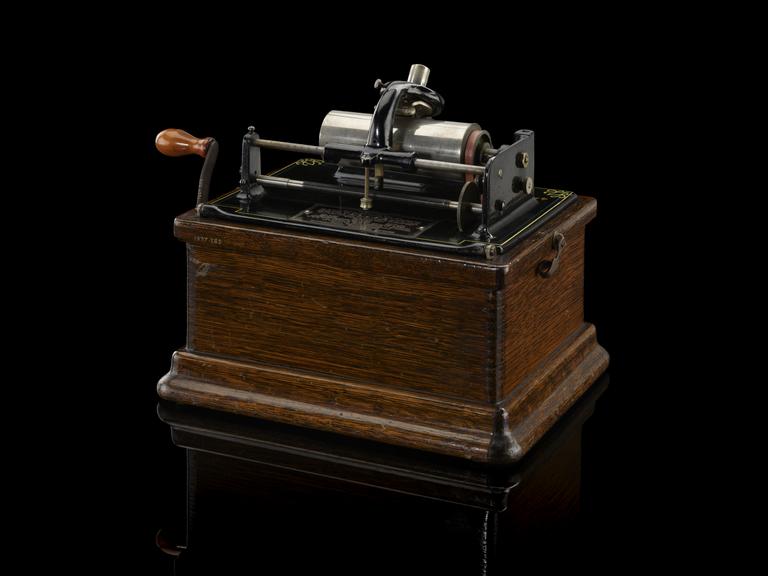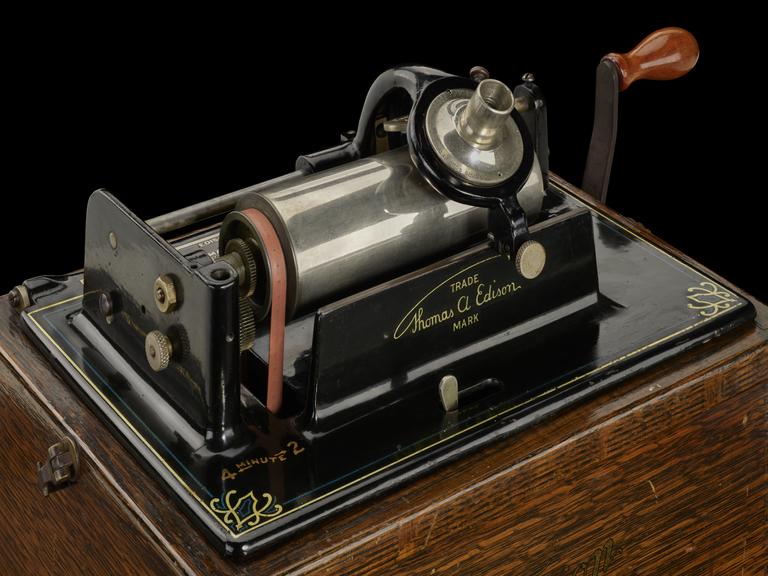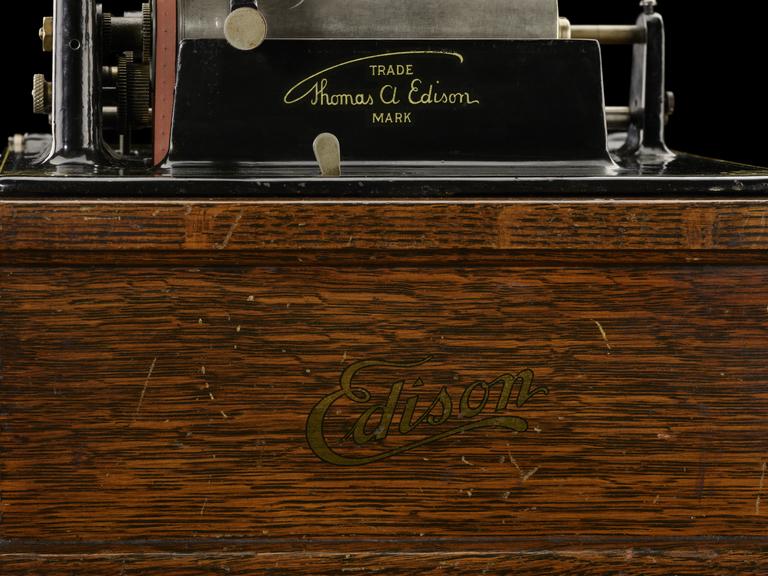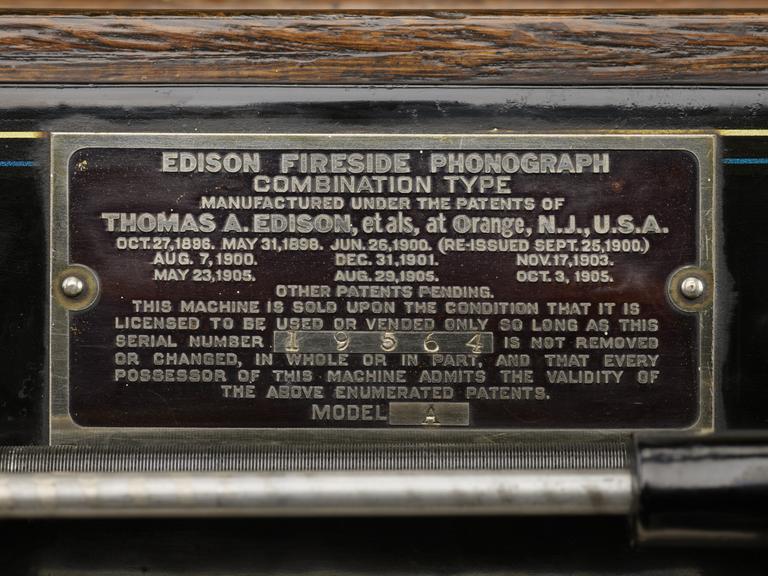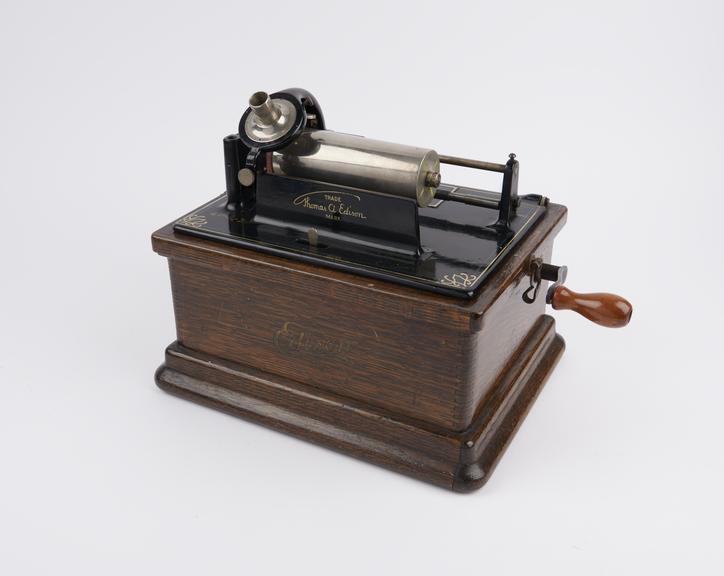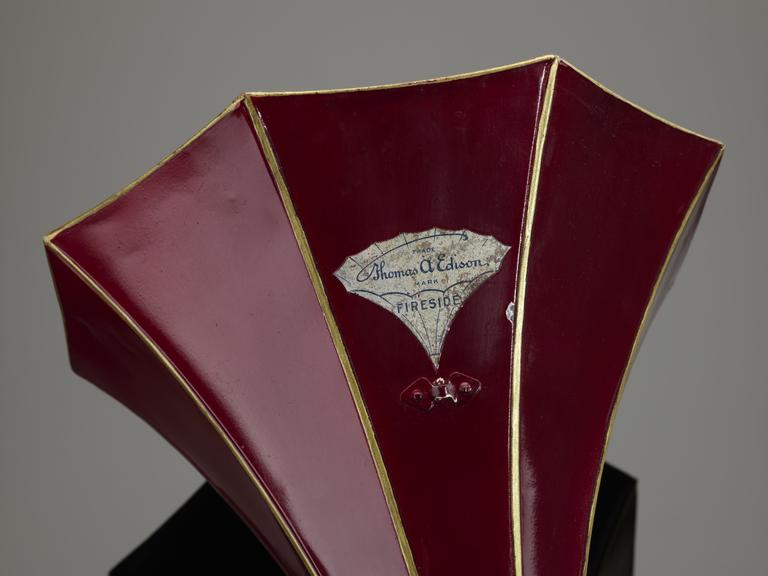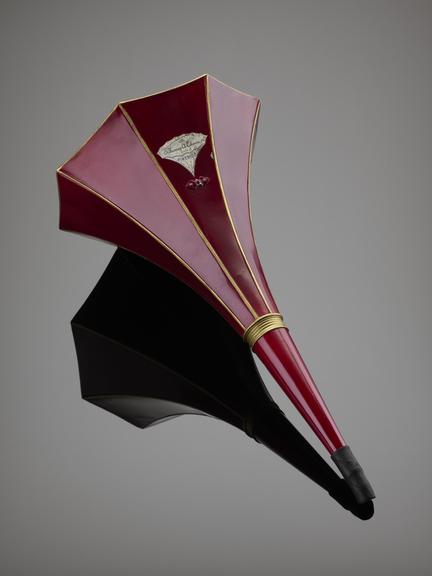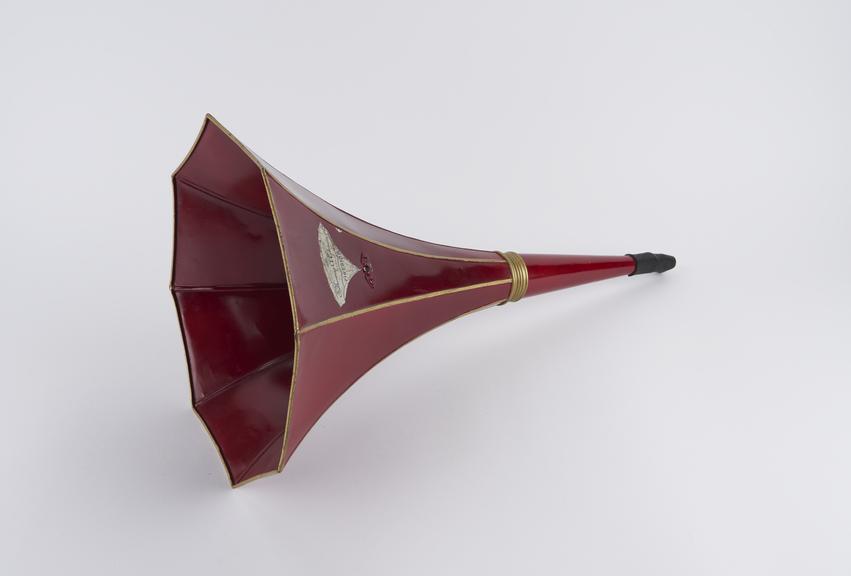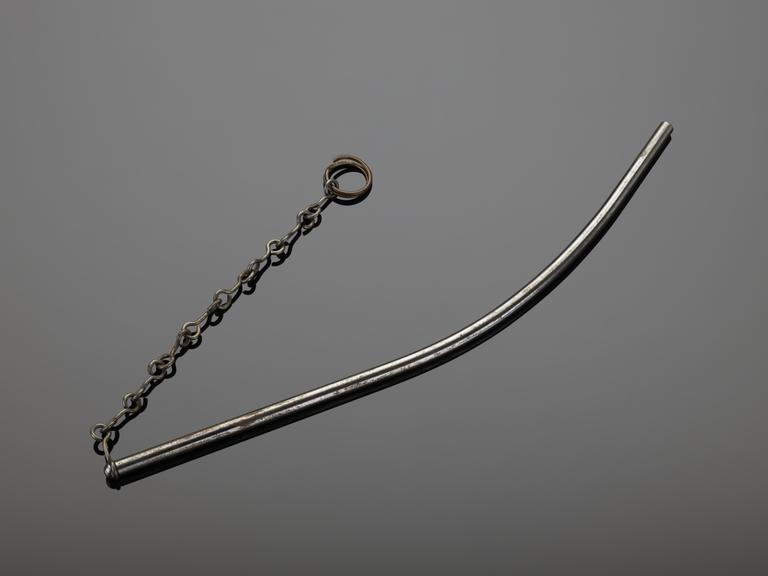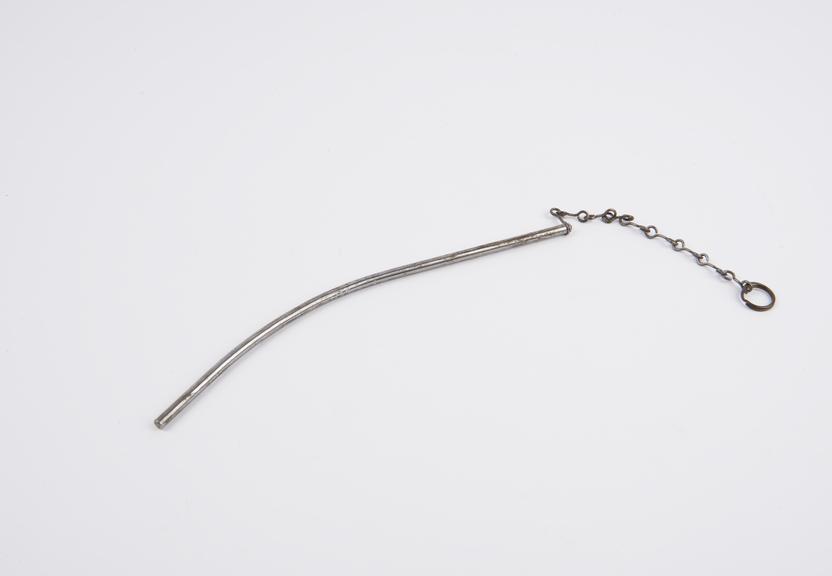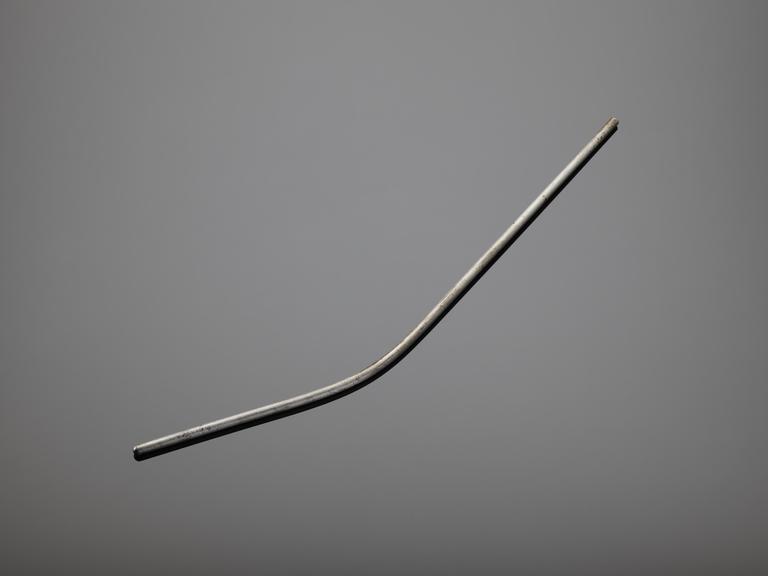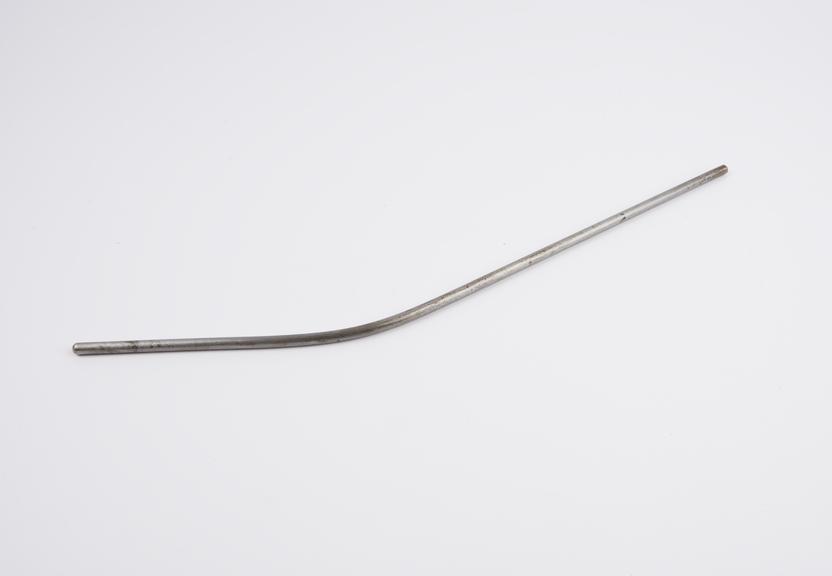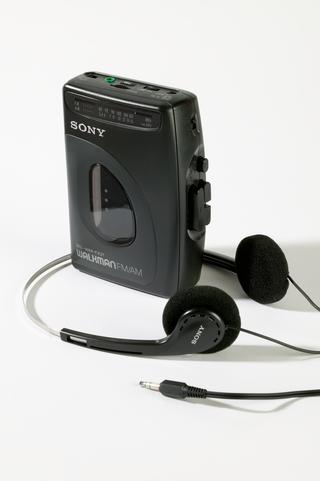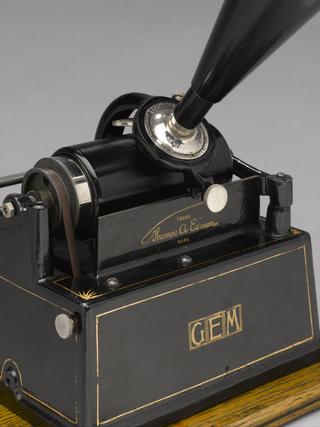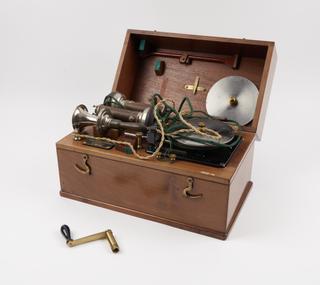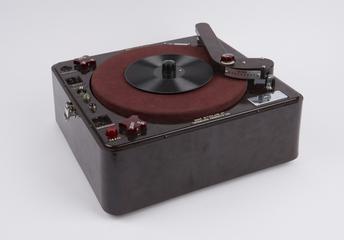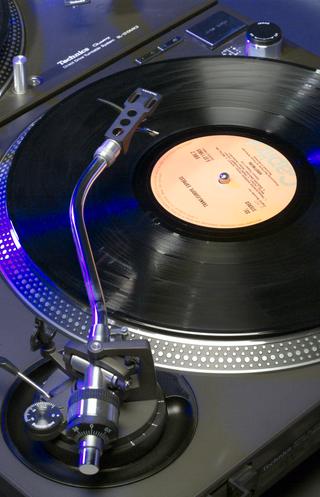Edison 'Fireside' phonograph, c.1909
Phonograph, Edison 'Fireside', complete, using alternatively 2 or 4 minute records, with two cylinder records (one 2 minutes, one 4 minutes), c. 1909.
More
Invented by Thomas Edison in 1877, phonographs were analogue devices built for the reproduction and recording of sound. Deriving from Greek, its name means ‘sound writing’, phonographs worked through a stylus (or needle) mechanically tracing the waveforms previously impressed on a wax cylinder which when rotated along its axis produced vibrations which could be heard through a horn. Edison invented the phonograph while working on a telegraphic device that could record and send voice messages. His first prototype consisted of a grooved cylinder covered in tinfoil in which recorded words were etched and then played back. Following the invention, Edison filed for a patent and in early 1878 created The Edison Speaking Phonograph Company.
This Fireside Combination Type phonograph dates from 1909 and played wax cylinders. It replaced what was later referred to as Edison’s Standard model, which could only play two-minute recordings. This model, however, has a double stylus allowing it to play both two- and four-minute cylinders. Though produced until 1929, wax cylinders and the phonograph lost popularity to the gramophone and the disc record which was easier to mass produce.
- Measurements:
-
overall: 210 mm x 400 mm x 255 mm, 7 kg
- Materials:
- wood (unidentified) and metal (unknown)
- Object Number:
- 1937-265/1
- type:
- phonograph
- Image ©
- The Board of Trustees of the Science Museum













